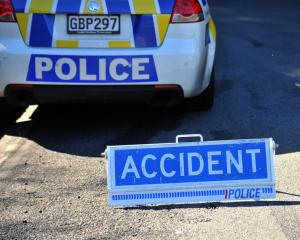
The Ashburton District Council has kept its contribution at $7.5m, despite the estimated price jumping by 15 per cent in two years.
The business case prepared in 2022 estimated the project – a 360-metre-long bridge across the river and new road infrastructure - would cost $113m.

The Government has made the bridge, a key State Highway 1 route in Canterbury, a national transport priority.
Minister Brown made it clear the district council would need to look for funding in the National Land Transport programme process, Riach said.
That will start with conversations between the District council and NZ Transport Agency Waka Kotahi around “innovative funding mechanisms”.
After meeting Riach and Mayor Neil Brown reached out to NZTA regional relationships director James Caygill about “actively getting on with those conversations with their funding people”.
The National Land Transport Programme (NLTP) is an investment package for priority transport projects. For a project to be included in the National Land Transport Programme it has to feature in a council’s Long Term Plan (LTP), Riach said.
A NZTA document prepared in November estimated the project would cost between $100-$200m. A recent report from Infometrics, commissioned by Local Government New Zealand, found that over the last three years, costs have gone up significantly and bridges are 38 per cent more expensive to build.
“We note the bridge is programmed to cost $130m and our share, at $7.5m, may or may not survive the whole funding process. A lot is going on in this space that is incredibly uncertain.”
The district council will adopt its LTP in June, including the $7.5m figure, before knowing what the NLTP entails, Riach said.

The Minister acknowledged the need for the bridge - easing congestion and improving safety on SH1 - and as a result, the subsidy rate “needed to reflect the improvement to the state highway network”, Riach said.
“We took from that, that a subsidy rate ahead of our normal FAR (funding assistance rate) was entirely justified.”
Rather than a 51 per cent FAR subsidy the business case suggested 62 per cent, but the question remains how to fill the gap between 62 per cent and 100 per cent, Riach said.
Mayor Brown said the minister also spoke of the Government looking at different ways of funding roading going forward. This included the possibility of road tolls, Riach said. “He reiterated that it is certainly his intention to review the way in which tolling is a mechanism for funding projects a little bit later in the year.”
However, under current legislation, tolls can only be placed on state highways, not on a local road, which is what the second bridge is considered to be. It also prevents an NZTA toll from raising funds for a district council project – so a toll on the existing SH1 bridge couldn’t be used to fund the new local road bridge.
A legislative change could see the possibility of introducing a toll on the existing bridge or on the second bridge to pay for the project. There are currently only three tolled roads in New Zealand, all in the North Island.
By Jonathan Leask, local democracy reporter
LDR is local body journalism cofunded by RNZ and NZ On Air.












